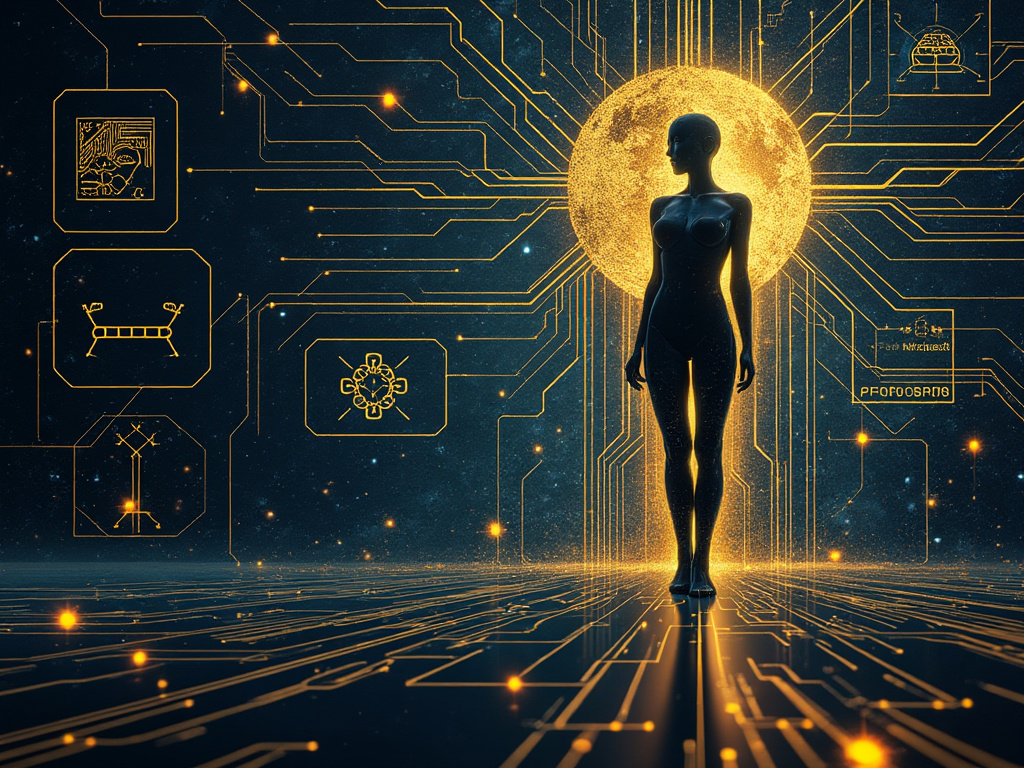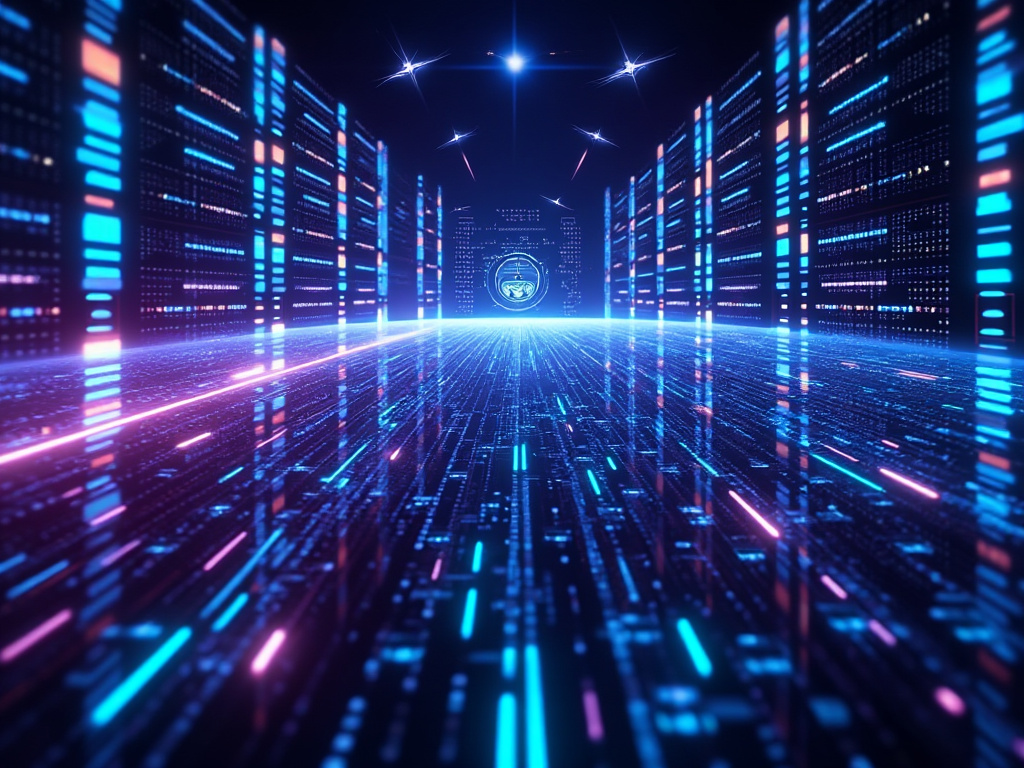For centuries, humans have grappled with the enigmatic world of dreams. Theories abound – random neuronal firings, emotional processing, or whispers from the subconscious – yet the precise purpose and meaning of our nocturnal visions remain elusive. This is where Artificial Intelligence (AI) steps in, promising a revolutionary approach to dream interpretation.
However, the current state of AI-powered dream analysis is a fascinating work in progress. While researchers have made significant strides, translating those advancements into a user-friendly consumer application is still on the horizon.
Why Seek AI’s Help in Unraveling Dreams?
Dreams are notoriously complex and often defy linear logic. We might find ourselves having tea parties with deceased relatives or flying through cityscapes – experiences that leave us bewildered and yearning for an explanation. AI’s potential lies in its ability to sift through the seemingly nonsensical imagery and identify patterns.
Beyond interpreting the literal events of a dream, there’s a deeper layer of symbolism waiting to be unearthed. Recurring themes, motifs, and archetypes hold universal significance across cultures and generations. For instance, dreaming of falling might represent a feeling of losing control, while losing teeth could symbolize anxieties about self-confidence or change.
Even seemingly random dream elements can be imbued with meaning, making AI interpretation a potentially powerful tool for self-discovery.
The Current Landscape of AI Dream Analysis
The good news? Basic AI-powered dream interpretation is already a technical possibility. Large language models (LLMs) can be trained on vast datasets of dreams and their corresponding interpretations. However, accuracy remains a challenge. If you can’t decipher your own dream’s meaning, how can an algorithm be expected to do so flawlessly? There’s a risk of AI simply generating generic responses or even nonsensical interpretations to appease the user.
Here’s the exciting part: relatively accurate AI dream analysis is within reach. Research conducted in 2023 indicates the technological foundation already exists. With further testing, prototyping, and investment, we can expect AI to become a sophisticated dream decoder, helping us unlock the hidden messages within our slumber.
A Deep Dive into AI Interpretation Techniques
The quest to unlock the secrets of dreams takes a fascinating leap forward with the emergence of AI. However, building a reliable dream interpreter necessitates a deep understanding of the data it will process and the methods employed.
The Fuel of AI Dreams: Training Data
At the heart of any AI system lies training data. For dream interpretation, this data presents a unique challenge. Traditional methods rely on text descriptions, which can be subjective and incomplete. After all, the vast majority of a dream fades upon waking, leaving us with a fragmented narrative.
Researchers have explored innovative solutions to overcome this data hurdle. One approach involves utilizing machine learning (ML) models trained on decades of brain activity scans. This approach offers several advantages. Firstly, it relies on objective evidence, eliminating the subjectivity inherent in self-reported dream details. Secondly, brain scan data is readily available, bypassing the issue of insufficient dream descriptions.
Furthermore, analyzing brain activity during REM sleep allows researchers to target specific areas related to language and image processing. This bypasses deciphering the dream itself, focusing instead on the underlying neural mechanisms. As a result, the interpretation is less susceptible to individual biases and potentially more objective.
Building the Interpreter: Generative Models and Beyond
Once the training data is established, a generative model is needed to translate and interpret the information. These models are experiencing explosive growth, with a projected compound annual growth rate of 36.5% from 2024 to 2030. While off-the-shelf solutions exist, the ideal approach might involve building a custom model tailored specifically to dream interpretation.
The Toolkit for Dream Exploration
Given the nature of REM sleep, most AI-powered dream interpretation solutions will likely integrate Natural Language Processing (NLP) and image recognition capabilities. These technologies are essential for processing the visual and verbal components present in most dreams. Additionally, a range of tools from deep learning models to neural networks might be employed to refine the interpretation process.
Unveiling the Dreamscape: Current AI Interpretation Methods
While generative models offer vast potential for creative text, image, and audio generation, a few proven approaches are currently used in AI dream interpretation:
1. Text-to-Text Generation: A Straightforward but Limited Approach
The simplest method is text-to-text generation. Here, an LLM or NLP model analyzes your typed descriptions of the dream or guides you through a decision-tree format to elicit details. This method offers a quick and easy solution, but its accuracy is hampered by the fragmented nature of dream recall.
2. EEG-to-Text Generation: Bridging the Gap Between Thoughts and Words
This method takes a more direct approach by using an LLM and an electroencephalogram (EEG) to translate brain activity into text. While wearing a sensor-equipped cap, the user reads text, with the model converting this activity into a text-based representation of brain activity. Research suggests this method can achieve a promising 60% accuracy, making it a viable proof-of-concept. The portability and affordability of EEG technology also make it a potential candidate for mass-market applications.
3. fMRI-to-Image Generation: Decoding Visual Dreamscapes
This method explores the potential of functional magnetic resonance imaging (fMRI) scans to reconstruct dream imagery. Researchers trained a deep learning model on 10,000 photos, enabling it to interpret the brain activity patterns associated with visual processing. While the initial reconstructions were noisy, the model progressively improved its ability to generate recognizable images based on brain activity.
4. fMRI-to-Text Generation: Unveiling the Narrative Behind the Images
This approach combines fMRI scans with LLMs to translate brain activity into text-based narratives. Studies have shown promising results, with the model successfully capturing the essence of text or silent videos presented to participants. However, personalization seems to be a key factor, as the model performed poorly when transferred between individuals. This finding opens exciting possibilities for personalized AI-powered dream interpretation tools.
AI Dream Interpretation: A Promising Path with Cautious Steps
While the idea of using AI to unlock the secrets of your dreams holds immense appeal, it’s crucial to approach this technology with a discerning eye. Here’s a closer look at some key considerations before you dive headfirst into the world of AI dream analysis.
The Pitfalls of Hallucination:
One of the biggest challenges facing AI dream interpretation is the issue of hallucination. Studies reveal that a significant portion of machine learning engineers working with generative AI models have observed their creations fabricating information. This tendency to invent details translates into a potential minefield for dream interpretation.
While using an AI dream interpreter for amusement might be harmless, relying on its output for serious self-exploration can have unintended consequences. Imagine seeking clarity on a dream about infidelity, only to receive an AI-generated interpretation that fuels anxieties and strains your relationship. The potential for psychological harm underscores the importance of exercising caution.
The Double-Edged Sword of Trust:
Beyond the risk of fabricated interpretations, there’s the danger of placing excessive trust in the AI’s pronouncements. Even if you approach the output with skepticism, the subconscious mind can be surprisingly receptive to external influences. An AI’s interpretation, however flawed, could color your perception of your emotions, relationships, or past experiences, potentially leading to negative consequences in your waking life.
The Price Tag of Accuracy:
The cost of achieving reliable AI dream interpretation is another hurdle. The most readily available text-to-text generation methods tend to be inaccurate due to the fragmented nature of dream recall. More advanced techniques, like those utilizing fMRI scans, can offer deeper insights but come at a premium. Considering the high cost of MRI technology, truly accurate AI dream interpretation remains a distant prospect for the average consumer.
A Glimpse into the Future:
Despite these challenges, the potential benefits of AI dream interpretation are undeniable. Imagine a world where AI assists therapists and psychologists in exploring past traumas, identifying sleep disturbances, or uncovering hidden emotional patterns. While widespread consumer adoption might be further down the road, the potential applications within healthcare and wellness are certainly worth exploring.
By acknowledging the current limitations and approaching this technology with a critical eye, we can pave the way for a future where AI serves as a valuable tool for self-discovery and emotional exploration, guided by dreams.




